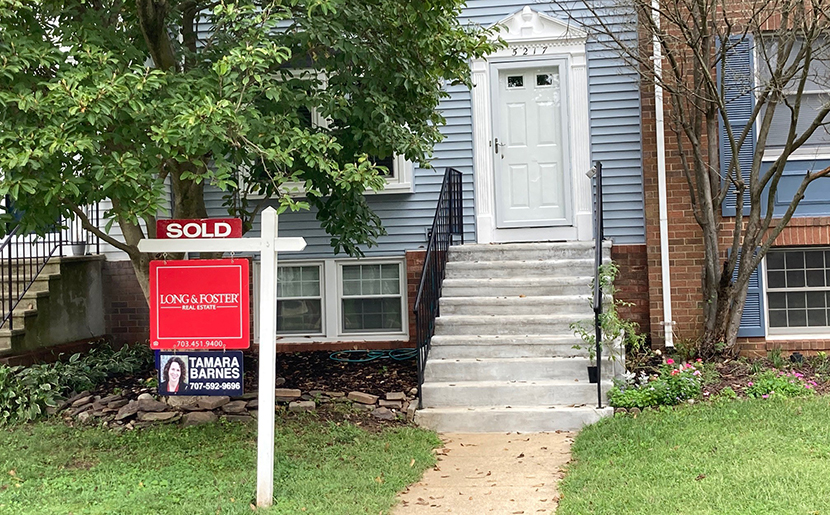
June Existing Home Sales Up 1.4%

Existing home sales increased in June, the first monthly increase in five months, the National Association of Realtors reported Thursday.
The report said total existing-home sales (https://www.nar.realtor/existing-home-sales) rose by 1.4% from May to a seasonally adjusted annual rate of 5.86 million in June. Sales climbed year-over-year, up 22.9% from a year ago (4.77 million).
Single-family home sales rose to a seasonally adjusted annual rate of 5.14 million in June, up 1.4% from 5.07 million in May and up 19.3% from one year ago. The median existing single-family home price jumped to $370,600 in June, up 24.4% from a year ago.
Existing condominium and co-op sales rose to a seasonally adjusted annual rate of 720,000 units in June, up from 710,000 in May and up 56.5% from one year ago. The median existing condo price rose to $311,600 in June, an annual increase of 19.1%.
Regionally, existing home sales in the South were unchanged from May at an annual rate of 2,590,000 in June, but improved by 19.4% from a year ago. The median price in the South rose $311,600, a 21.4% climb from one year ago. Sales in the West rose by 1.7% to 1,200,000 in June and improved by 23.7% jump from a year ago. The median price in the West rose to $507,000, up 17.6% from June 2020.
Existing home sales in the Northeast increased by 2.8% in June to an annual rate of 740,000, and by 45.1% from a year ago. The median price in the Northeast rose to $412,800, up 23.6% from June 2020. Sales in the Midwest rose by 3.1% to an annual rate of 1,330,000 in June and by 18.8% from a year ago. The median price in the Midwest rose to $278,700, an 18.5% increase from a year ago.
“The existing-home sales report for June brought some positive news for the housing market,” said Joel Kan, Associate Vice President of Economic and Industry Forecasting with the Mortgage Bankers association. “Sales increased 1.4%, ending a four-month streak of declines, and there was an improvement in the very tight supply conditions seen over the past year. Inventory increased 3% last month, helped by more homeowners listing their home for sale. Additional data from the U.S. Census Bureau yesterday showed that the homebuilding sector is also trying to keep up with demand.”
Kan noted, however, the median sales price jumped 23% from a year ago to $363,300 –another record high. “This is an indication that affordability challenges persist for many potential buyers,” he said. “Our data on mortgage applications show that purchase activity has moved lower since March, while the average loan size has stayed elevated, consistent with the elevated share of all-cash sales and higher median prices reported by NAR.”
Mark Vitner, Senior Economist with Wells Fargo Economics, Charlotte, N.C., said the sales turnaround is a reminder that, while home buying activity has cooled off this year alongside shrinking inventories and skyrocketing prices, underlying demand for homes remains strong. “One piece of evidence for still-robust demand is that homes continue to sell very quickly,” he said. “Properties remained on the market for an average of 17 days in June, which was unchanged from the prior month, but down from 24 days a year ago.”
Vitner noted on a month-to-month basis, inventories have now risen for four straight months. “That said, housing supplies are still incredibly tight, with inventories down 18.8% over the past year,” he said. “Still, the uptick in inventories is an encouraging sign that more sellers are putting their homes up for sale as COVID risks subside and home values ascend.”
“At a broad level, home prices are in no danger of a decline due to tight inventory conditions, but I do expect prices to appreciate at a slower pace by the end of the year,” said NAR Chief Economist Lawrence Yun. “Ideally, the costs for a home would rise roughly in line with income growth, which is likely to happen in 2022 as more listings and new construction become available.”
The report said total housing inventory at the end of June rose to 1.25 million units, up 3.3% from May’s inventory and down 18.8% from one year ago (1.54 million). Unsold inventory sits at a 2.6-month supply at the current sales pace, modestly up from May’s 2.5-month supply but down from 3.9 months in June 2020. The median existing-home price for all housing types in June was $363,300, up 23.4% from June 2020 ($294,400), as every region recorded price jumps. This marks 112 straight months of year-over-year gains.
NAR said properties typically remained on the market for 17 days in June, unchanged from May and down from 24 days in June 2020. Eighty-nine percent of homes sold in June 2021 were on the market for less than a month. First-time buyers accounted for 31% of sales in June, also even with May but down from 35% in June 2020. Individual investors or second-home buyers purchased 14% of homes in June, down from 17% in May but up from 9% a year ago. All-cash sales accounted for 23% of transactions in June, even with May and up from 16% in June 2020. Distressed sales represented less than 1% of sales in June, equal to May’s percentage but down from 3% in June 2020.
